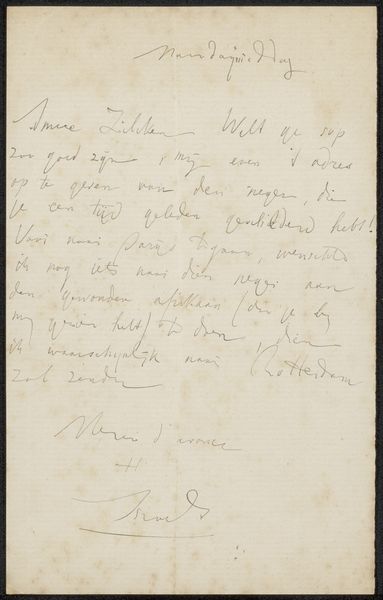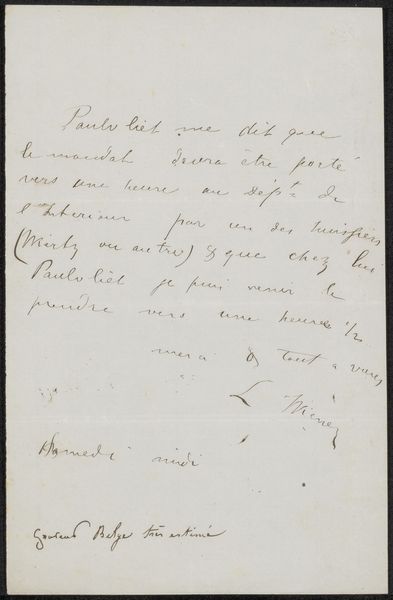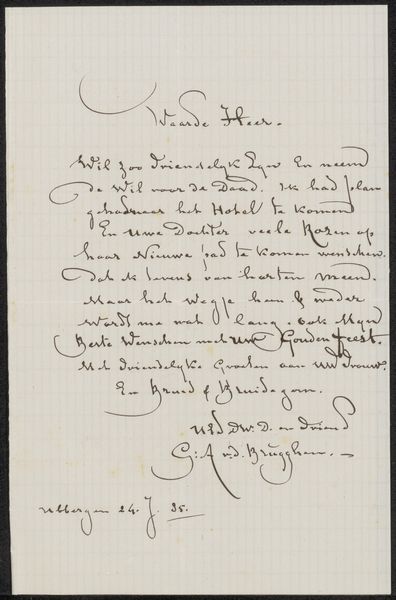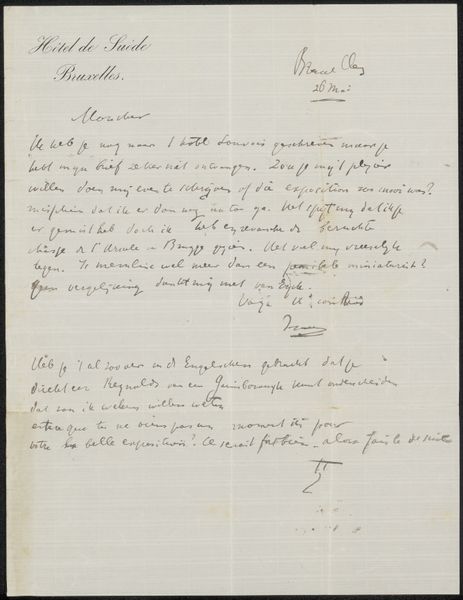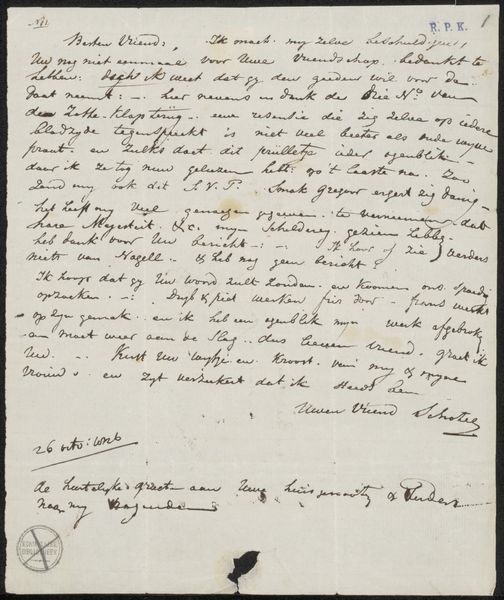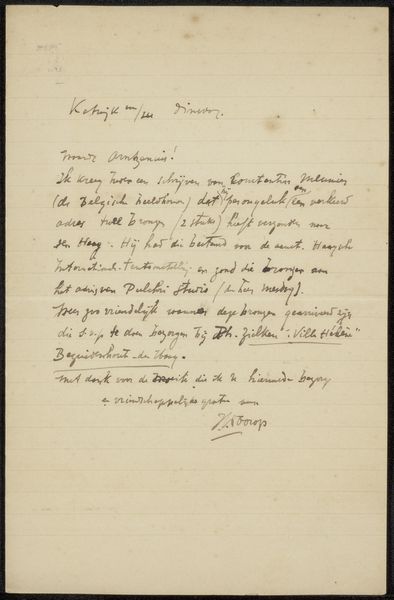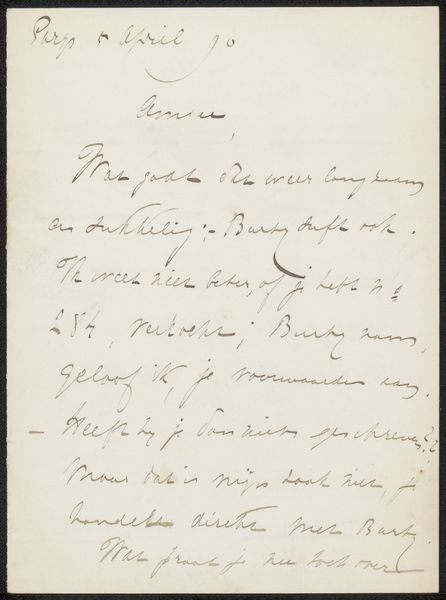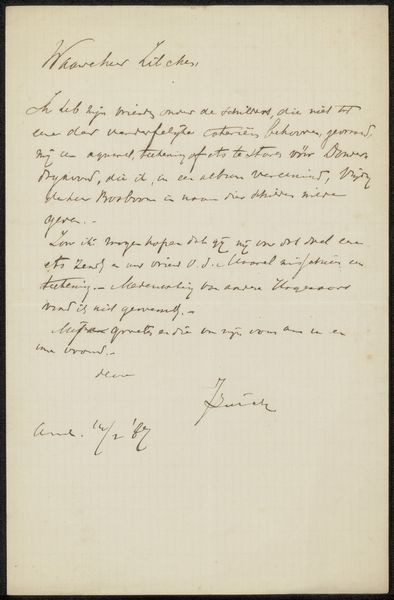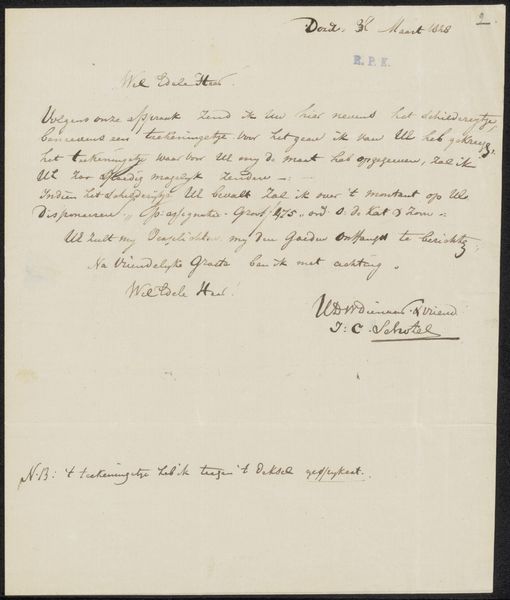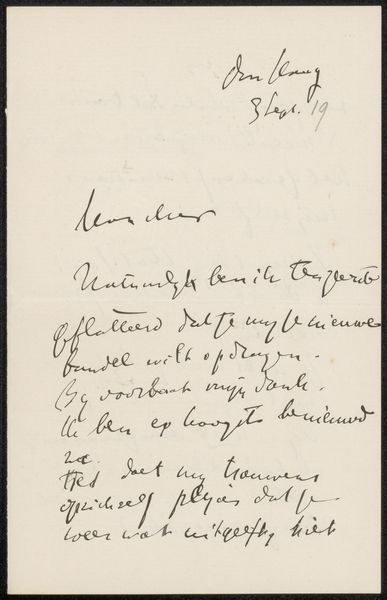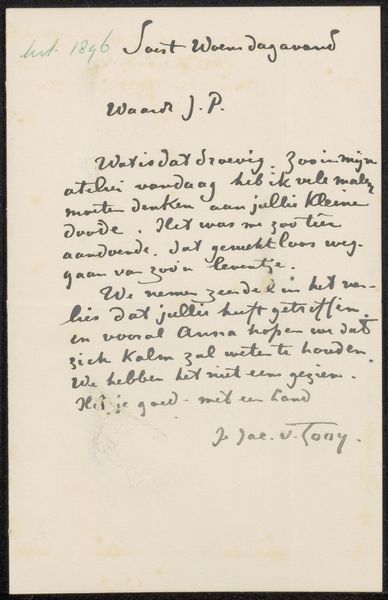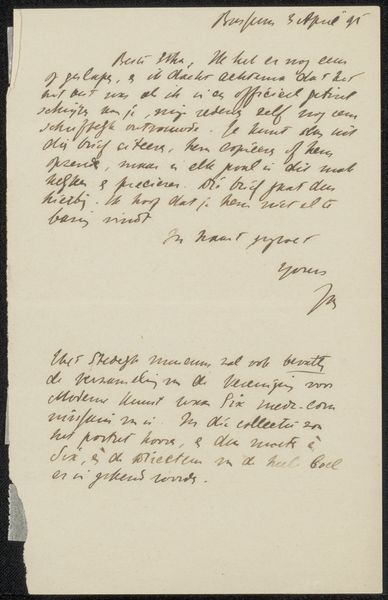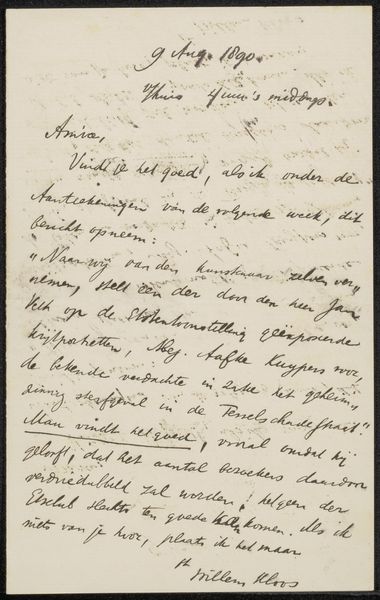
drawing, paper, ink, pen
portrait
drawing
hand-lettering
hand drawn type
hand lettering
paper
personal sketchbook
ink
hand-drawn typeface
ink drawing experimentation
ink colored
pen work
sketchbook drawing
pen
sketchbook art
calligraphy
Curator: Here we have "Brief aan Ary Johannes Lamme," possibly created between 1873 and 1878 by Guillaume Anne van der Brugghen. It's an ink drawing on paper. What strikes you about it? Editor: I'm fascinated by the handwritten aspect of this piece. It feels so intimate, like looking directly at someone's thoughts. How does the material nature of a letter like this affect our understanding of it as art? Curator: Exactly. Let’s think about the materiality here. We have paper, ink, the hand of the artist meticulously forming each letter. Before mass-produced fonts, handwriting carried so much more weight. Each flourish and imperfection reflects the individual labor and skill, blurring the lines between high art and functional communication. What do you make of the visual composition itself? Editor: It’s quite simple; the focus is completely on the text. But there's still an art to the layout, the spacing, and the consistent slant of the letters. Is the message itself secondary to the artistic execution of the handwriting? Curator: It prompts us to consider what constitutes "art." Is it the message being conveyed, or the deliberate crafting of form and texture through the application of ink on paper? The value of labor invested? This invites questions about the social context too, consider who would have had the resources and training to produce such refined script in this period? Editor: So, understanding the means of production – the pen, ink, paper, and the skill involved – offers a deeper understanding. Curator: Precisely. By examining the materiality, we see how class and education intersect with artistic expression. It is a glimpse into the artisanal skills valued at the time. Editor: I see now. Focusing on the materials and their creation allows a closer understanding of not just the art but also the social implications. Curator: Indeed. This approach allows us to move beyond mere aesthetics and engage with the piece's cultural and economic significance.
Comments
No comments
Be the first to comment and join the conversation on the ultimate creative platform.
